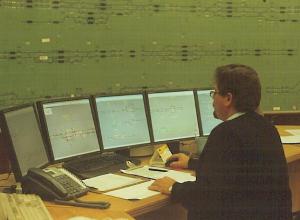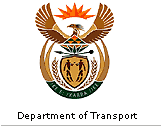 |
Ladysmith-Van Reenen (and the Free State) Main LineThe 42 km KwaZulu-Natal section and the 37 km Orange Free
State portion of the line from Ladysmith to Harrismith
were
opened in 1892. This was later extended from Harrismith to
Bethlehem between 1903 and 1905, and to a junction on the
Free State mainline at Kroonstad (Gunhill) in 1906. The
line provided an important short-cut between Natal and
the Orange Free State.
The original line over Van Reenen's Pass in Natal included
three reversing stations constructed because of the
mountainous nature of the Drakensberg escarpment. The
reverses were eliminated in 1925 with the construction of
a tunnel, but the line was still steeply graded, and a
completely new line (which included a complete spiral) was
opened in 1963.
Over the years, most of the line in the Free State has
been reconstructed, upgraded and finally electrified at 3
kV in 1969. After years of train control by the Van Schoor
tablet system, the line is now under the radio track
warrant system. The route has been traditionally used by
through passenger trains, including the old Orange Express
between Durban and Cape Town which ran via Bloemfontein
and Kimberley. Through freight trains are also operated,
connecting with trains at De Aar which run to Namibia.
Important export traffic originates at Sasolburg, and is
routed via Kroonstad to Ladysmith and Durban. During
2005/2006, this traffic exceeded
157,000 tons. There is a considerable volume of grain
traffic, both from the main line itself and from the
various branches and arterial secondary lines. In
2005/2006, some 53, 005 tons of maize was generated from
seven mainline
stations and
routed towards the east, mostly to KwaZulu-Natal, while
only slightly over 8,800 tons was directed to the west and
to the Eastern and Western Cape. Another 58,604 tons of
wheat was also generated along the line and directed to
various South African destinations and Lesotho. This
traffic is very unpredictable, and traffic patterns may
change completely from year to year, depending on weather
conditions which may affect grain production, prices and
the resulting domestic needs and export potential.

Danskraal CTC 1
|
For Details of
Volumes and Commodities Received
and Forwarded [Table 5]CLICK HERE
|
 |



